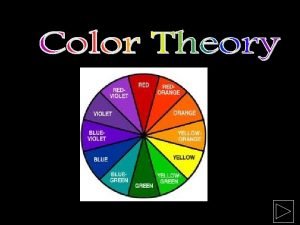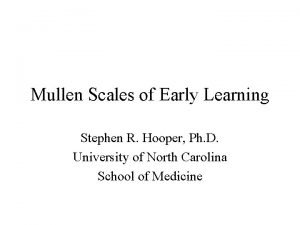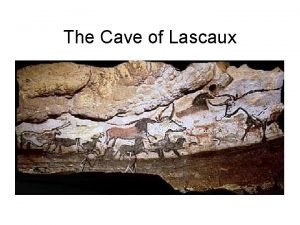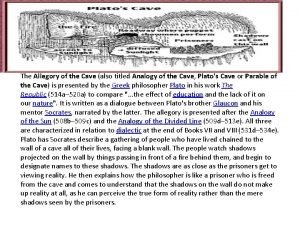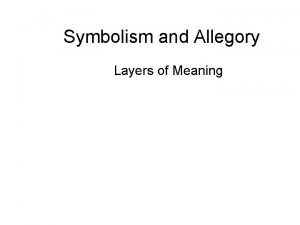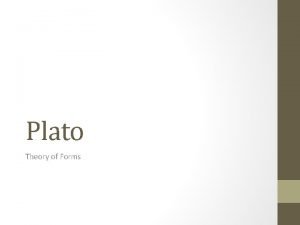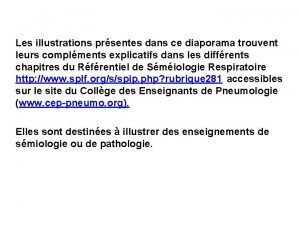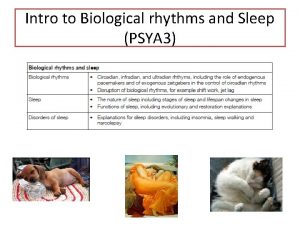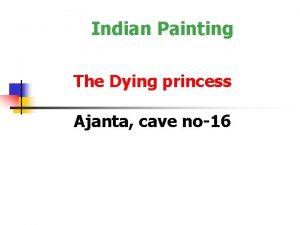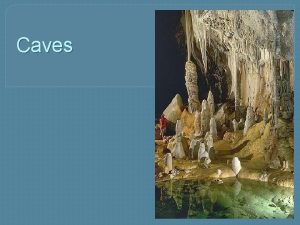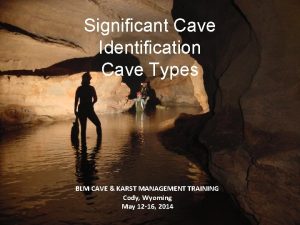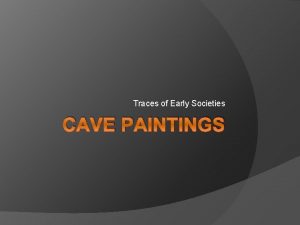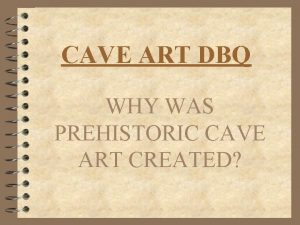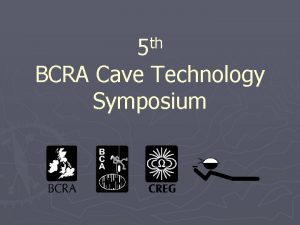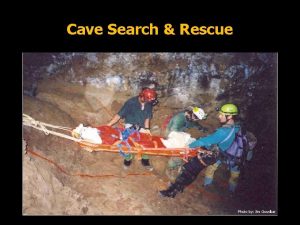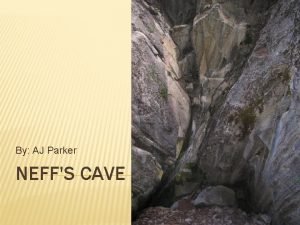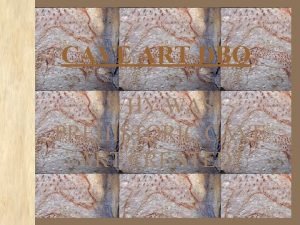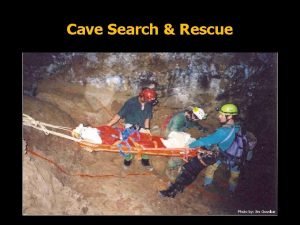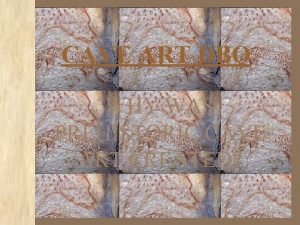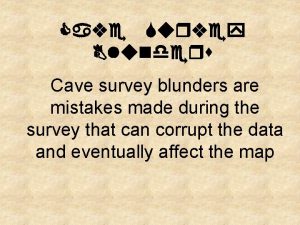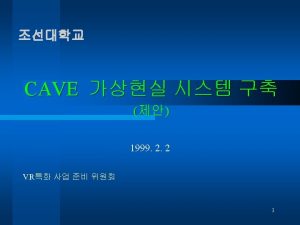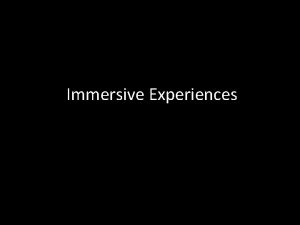Cave Drawings Cave drawings are an early form























- Slides: 23

Cave Drawings Cave drawings are an early form of communication or media

How New or Old is Communicating with Symbols and NOT words? • • Egyptians used cursive hieroglyphs for religious literature Ancient Egypt is believed to date back as far as 3000 B. C.

Painting as Media in the Absence of Photography Velasquez was a Spanish painter during the Baroque period, b. 1599 d. 1660 (age 61) Velasquez, Portrait of Pope Innocent X Diego Velasquez, The Maids of Honour

Painting as Expression • The Industrial Revolution eventually lead to the manufacturing of photographic film (around 1885), and the invention of the 35 mm compact camera (around 1913). • This created a shift in portraits from paint to photographic technology. Francis Bacon’s painting from 1953

What do These 2 Things Have in Common? Gothic Architecture 12 th century- 16 th century Superman first appeared in 1938

Technological Developments • Flying Buttresses • Flat Screen TVs

Technological Developments

Memento Mori: Victorian Death Photos • Post-mortem photography (also known as memorial portraiture or memento mori) is the practice of photographing the recently deceased. • The invention of the daguerreotype in 1839 made portraiture much more commonplace. • People who were unable to afford a painted portrait could afford to sit for a photography session. • This cost effective method provided the middle class with a means for memorializing dead loved ones.

Technological Developments • The practice of post-mortem photography eventually ended as "snapshot" photography became more common.

Key Questions • Do we shape technology or does it shape us? • Do we influence media or does it influence us? • How does the world around us inform artists, filmmakers and designers?

What do These Three Men Share? Sergei Eisenstein Georg Wilhelm Friedrich Hegel Karl Marx

Dialectic Montage Soviet Montage • Battleship Potemkin 1925 • Odessa Steps scene

Montage • Juxtaposes images by editing • Uses various camera angles with cut away shots- like a storyboard • Eisenstein’s theory has influenced contemporary film and video • Eisenstein believed that film montage could create ideas or have an impact beyond the individual images. • Two or more images edited together create a third thing that makes the whole greater than the sum of its individual parts.

• Eisenstein's greatest demonstration of the power of montage comes in the "Odessa Steps" sequence of his 1925 film Battleship Potemkin. • On the simplest level, montage allows Eisenstein to manipulate the audience's perception of time by stretching out the crowd's flight down the steps for seven minutes, several times longer than it would take in real time. • There is a much deeper level to the collision of two shots/ images.

• Hegel was a philosopher • His studies included the life-process of the human brain and the process of thinking that leads to an idea • • Marx was a philosopher who was influenced by Hegel. • Some of his theories explore the translation of the material world into independent forms of thought. • Dialectic The art or practice of arriving at the truth by the exchange of logical arguments. The process associated with Hegel of arriving at the truth by stating a thesis, developing a contradictory antithesis, and combining and resolving them into a coherent synthesis. Linked to conflict theory. A method of argument or exposition that systematically weighs contradictory facts or ideas with a view to the resolution of their real or apparent contradictions. The Marxian process of change through the conflict of opposing forces, whereby a given contradiction is characterized by a primary and a secondary aspect, the secondary succumbing to the primary, which is then transformed into an aspect of a new contradiction.

Independent Translations and Ideas • The nature of the montage is to generate an intellectual idea from the collision of independent shots.

Think of Your Brain as an Organic Computer • Your brain receives visual and audio information and tries to make sense of it. Think of this information as data. • But sometimes it can’t make sense of the data because your brain has flaws.

Think of Your Brain as an Organic Computer • Your brain receives visual and audio information and tries to make sense of it. Think of this information as data. • But sometimes it can’t make sense of the data because your brain has flaws.




Myth or Science: The Secrets of Our Senses- CBC The Nature of Things Episode: Myth or Science: The Secrets of Our Senses

Professor Steve Mann has used a “wearable computer” as a telecommunication device for over 20 years. He considers himself to be a cyborg.
 Mikael ferm
Mikael ferm The term geologists use for underground water is
The term geologists use for underground water is Early cpr and early defibrillation can: *
Early cpr and early defibrillation can: * Polygon drawings line color value texture shape space form
Polygon drawings line color value texture shape space form Point line shape form
Point line shape form Present continuous interrogative negative
Present continuous interrogative negative Garda vetting form early childhood ireland
Garda vetting form early childhood ireland Mullen scales of early learning scoring
Mullen scales of early learning scoring Long wavy grass bear hunt
Long wavy grass bear hunt Cave symbols
Cave symbols Allegory of the cave fahrenheit 451
Allegory of the cave fahrenheit 451 Taino cave paintings
Taino cave paintings Allegory vs symbolism
Allegory vs symbolism Visiting hour maccaig
Visiting hour maccaig Allegory of the cave meaning
Allegory of the cave meaning What is world of forms
What is world of forms Map of david's flight from saul
Map of david's flight from saul Syndrome cave supérieur
Syndrome cave supérieur Kokopelli cave hotel
Kokopelli cave hotel Tabitha cave
Tabitha cave Michel siffre cave study psychology
Michel siffre cave study psychology Dying princess painting
Dying princess painting Cave compass
Cave compass Caves are natural underground spaces
Caves are natural underground spaces



